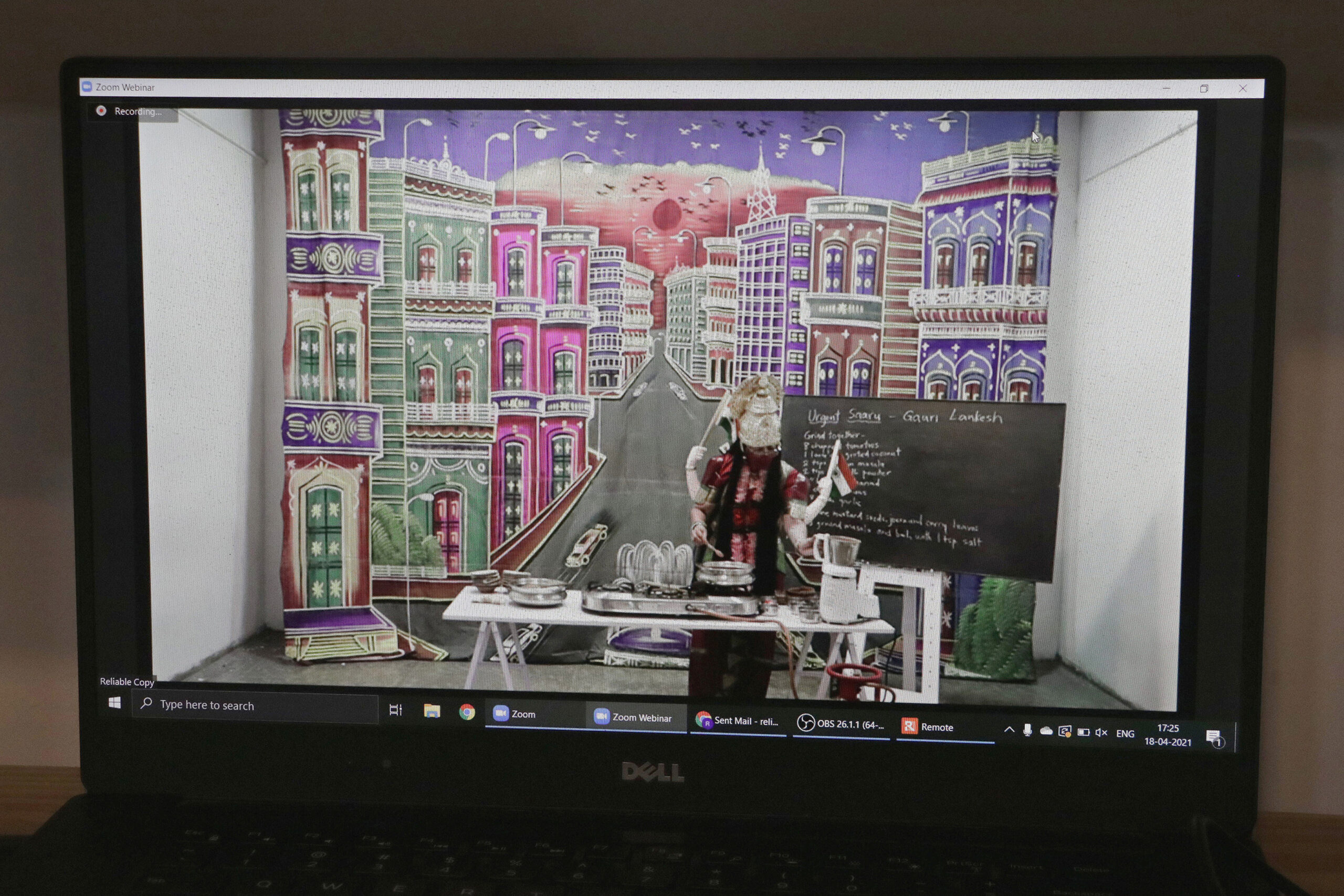The Durga Puja Pandal:
Centre Stage of Festivities and Creative Energies
Mallika Chakrawarti
A week back, the rain-bearing clouds which hovered over Delhi gave way to resplendent sunshine. The haze brought on by monsoons seemed to have lifted, and my mother made a significant remark on this fresh development. “Pujo is not too far away. Can you feel it in the air?” my ears perked up at that. The days before Goddess Durga’s homecoming are marked with a sense of visceral excitement. The sweet scent of Shiuli flowers pervading the crowded lanes of the city indicates the onset of the much-awaited festival. The gentle autumn breeze teasing the leaves and branches of trees is yet another hopeful sign.
Ask a Bengali and we’ll tell you that Pujo is the time of the year we’ve been prepping for with indefatigable enthusiasm. This is not to say that non-Bengalis are unaffected by the ecstatic celebrations. Durga Puja involves the participation of an entire community, Bengalis and non-Bengalis included. Before the entire city is engrossed in the festivities, there are several tasks to be done. These would include, shopping for fanciful clothes, tidying up the house, and most importantly, getting work out of the way so that we’re not missing out on five, fun-filled days of devotion, merriment, entertainment and food.
"Navratri is observed across nine days, but the divine idols of Goddess Durga and her children are unveiled before devotees on Mahashashti (the sixth day). After a full year, to witness the Goddess in all her glory once again is a bedazzling sight! The imposing frame of Goddess Durga, her ornamental attire, and victorious expression as she stands over the fallen Mahishasur, seem to be seamlessly molded into one breathtaking idol. "
At the centre of the festivities is the good-old, pujo pandal. The pandal lays the rock-solid foundation for Durga puja celebrations, where devotion meets creativity on various levels. A makeshift structure of bamboo and cloth, it stands tall as a loyal patron of the creative arts. The popularity of theme-based pandals has expanded the creative scope of the pandal creator. A Harry Potter book, an epic saga or the traditional art forms of Bengal all likely serve as thematic inspirations. Lighting arrangements are usually elaborate; illuminated light panels grace the venue, and it is not uncommon to see installations crafted with tiny, multi-colored bulbs strung together on wired frames. A well-lit pandal sparkles against the evening sky and resembles a bedecked wedding venue. The aesthetics of a pujo baadi must celebrate Bengali traditions alongside contemporary trends. Artists are given free rein to explore their creative abilities in keeping with the festivities; on-site workers, cooks, dancers, artists, dhakis (drummers), singers and volunteers are all wholly immersed in the joyous proceedings of pujo.
Navratri is observed across nine days, but the divine idols of Goddess Durga and her children are unveiled before devotees on mahashashti (the sixth day). After a full year, to witness the Goddess in all her glory once again is a bedazzling sight! The imposing frame of Goddess Durga, her ornamental attire, and victorious expression as she stands over the fallen mahishasur, seem to be seamlessly molded into one breath-taking idol. The idolmakers of Kumartuli in Kolkata are known for their expertise in clay-modeling. Two months before the pujo fever grips the city, these sculptors get cracking on crafting the massive idols we see later at the pandal. Closer to home (Delhi is home for me), a team of idol-makers work tirelessly in Chittaranjan Park’s Kalibari complex to meet the demands for idols in Delhi, Rajasthan, Punjab, and even abroad. These idols are skillfully crafted from clay procured from the plains of Bengal and Punjab. In a detailed and meticulous process, the limbs of the idol are crafted separately. The final stroke of artistry is applied to the eyes, a week before pujo commences. This last exercise in idol-making is called “Chokkhudaan.” The crowning glory of Goddess’s ensemble is, of course, the Sholapith ornamentation. Sholapith is a handicraft that belongs to West Bengal. The craftsmen involved in shola work, design and create traditional motifs for decorative purposes. To make the perfect piece, colored paper, watercolors, golden thread and ribbons are used in combination with the ‘shola’ extract. The ‘shola’ herb grows in marshy lands and is extracted in the month of September and October. The luminous, inner section of the plant is used by craftsmen. The ornaments of the Goddess are examples of delicate Sholapith craftsmanship. The pandal interiors are often decorated with Sholapith panels and floral embellishments.



